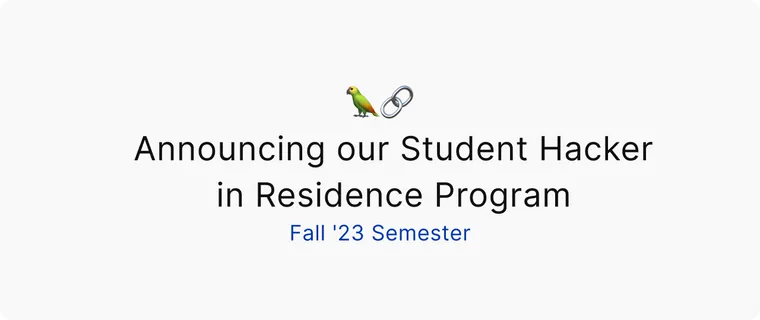Today, we're opening up applications for our inaugural student hacker in residence program.
We're looking for 3-5 students to work alongside the LangChain team this semester to build LLM applications that are creative, useful, thought-proving, and probably a little weird.
How it works
- Mostly just build. We'll work together to pick the right project. From there, your work will be largely self-guided.
- Build with the LangChain team. We'll will be available to unblock and collaborate as you need us. You'll share feedback and ideas that will help us make LangChain better.
- Get your app app in front of our community. We'll also collaborate on a blog post about your experience building that can help teach and inspire other builders.
- Meet other builders. You'll meet and trade tips with not only Student Hackers in Residence from other schools, but also professional developers and builders in our broader community.
- Stipend. $7,500 for 8 weeks (expectation is a minimum of 10 hours a week)
Apply
We're looking for full-time students that have built and shipped demos and apps before. The application will ask for an example of an application you're proud of and an idea for something you'd like to build.
If you have any questions about the program or candidacy, email brie@langchain.dev.
Project Ideas
This is a non-exhaustive list of the kinds of applications we hope our student hackers will build. Some will be apps that our community can use and others might be put to use by our team internally. We're also interested in apps you'd propose!
- Chatbot that actually remembers things about you (long term memory)
- Personal assistant: for scheduling meetings, replying to emails
- AI DevRel: Chatbot over langchain documentation, PR reviewer, issue responder, bot to build example apps, doc writer
- Write our bi-weekly release notes: here are example of what the output should look like.

